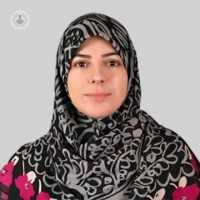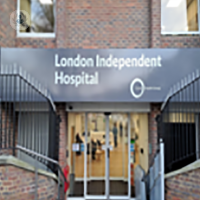What is pterygium and pinguecula?
Pterygium and pinguecula are two abnormal bumps in the conjunctiva of the eye.
- The pterygium appears as fleshy tissue on the cornea, its size may vary
- The pinguecula sprouts as a yellowish bump on the white of the eye.

Prognosis of pterygium and pinguecula:
These conditions are not cancerous (benign) and have a good prognosis with treatment.
Symptoms of pterygium and pinguecula:
In many cases, the pinguecula does not produce symptoms but other times it can become acutely inflamed and result in pingueculitis, which causes red eye and discomfort.
The pterygium in its initial stages is also usually asymptomatic, but when it develops it usually causes eye discomfort and occasional redness. In addition, growing on the cornea can modify its curvature, producing visual alterations, or if it reaches the visual axis, vision is reduced significantly.
Medical tests for pterygium and pinguecula:
An ophthalmological examination of the ocular surface is enough to identify a pterygium or pinguecula. Rarely is it necessary to biopsy the problem and analyse it under a microscope to distinguish it from other potentially malignant conjunctival lesions.
What causes pterygium and pinguecula?
Pterygium and pinguecula often develop from excessive exposure to ultraviolet rays. It is also more frequent in patients exposed to irritants such as dust and sawdust. Other factors involved are chronic dry eyes and ageing.
Can pterygium and pinguecula be prevented?
Pterygium and pinguecula are more common in tropical countries and especially in mountainous areas. This is because the most common cause of these bumps is life-long exposure to UV light, hence sunglasses or even wearing a hat are helpful in preventing them.
Treatments for pterygium and pinguecula:
Pterygium : its treatment can range from the application of drops to surgery. Several strategies can be combined according to their severity. A clean surgery might be needed to completely remove the affected tissues. The eye surface is then reconstructed by transplantation (often from the conjunctiva itself). It is an outpatient, painless surgery under local anaesthesia.
The pinguecula does not grow on the cornea, so no specific treatment is usually required unless it is frequently inflamed or because of cosmetic reasons, in which case it would be necessary to remove it with surgery.
Which specialist treats pterygium and pinguecula?
Ophthalmologists will help with preventing, diagnosing and treating diseases that affect the patient's eyes and visual capacity, such as pterygium and pinguecula.
The eyes are the essential organ of vision and are susceptible to many abnormalities throughout life. Ophthalmology is responsible for preserving the patient's visual capacity, through medical treatment techniques, surgery or with the help of external elements such as glasses or contact lenses.
11-13-2012 04-21-2023Pterygium and pinguecula
Ms Tahmina Pearsall - Ophthalmology
Created on: 11-13-2012
Updated on: 04-21-2023
Edited by: Jay Staniland
What is pterygium and pinguecula?
Pterygium and pinguecula are two abnormal bumps in the conjunctiva of the eye.
- The pterygium appears as fleshy tissue on the cornea, its size may vary
- The pinguecula sprouts as a yellowish bump on the white of the eye.

Prognosis of pterygium and pinguecula:
These conditions are not cancerous (benign) and have a good prognosis with treatment.
Symptoms of pterygium and pinguecula:
In many cases, the pinguecula does not produce symptoms but other times it can become acutely inflamed and result in pingueculitis, which causes red eye and discomfort.
The pterygium in its initial stages is also usually asymptomatic, but when it develops it usually causes eye discomfort and occasional redness. In addition, growing on the cornea can modify its curvature, producing visual alterations, or if it reaches the visual axis, vision is reduced significantly.
Medical tests for pterygium and pinguecula:
An ophthalmological examination of the ocular surface is enough to identify a pterygium or pinguecula. Rarely is it necessary to biopsy the problem and analyse it under a microscope to distinguish it from other potentially malignant conjunctival lesions.
What causes pterygium and pinguecula?
Pterygium and pinguecula often develop from excessive exposure to ultraviolet rays. It is also more frequent in patients exposed to irritants such as dust and sawdust. Other factors involved are chronic dry eyes and ageing.
Can pterygium and pinguecula be prevented?
Pterygium and pinguecula are more common in tropical countries and especially in mountainous areas. This is because the most common cause of these bumps is life-long exposure to UV light, hence sunglasses or even wearing a hat are helpful in preventing them.
Treatments for pterygium and pinguecula:
Pterygium : its treatment can range from the application of drops to surgery. Several strategies can be combined according to their severity. A clean surgery might be needed to completely remove the affected tissues. The eye surface is then reconstructed by transplantation (often from the conjunctiva itself). It is an outpatient, painless surgery under local anaesthesia.
The pinguecula does not grow on the cornea, so no specific treatment is usually required unless it is frequently inflamed or because of cosmetic reasons, in which case it would be necessary to remove it with surgery.
Which specialist treats pterygium and pinguecula?
Ophthalmologists will help with preventing, diagnosing and treating diseases that affect the patient's eyes and visual capacity, such as pterygium and pinguecula.
The eyes are the essential organ of vision and are susceptible to many abnormalities throughout life. Ophthalmology is responsible for preserving the patient's visual capacity, through medical treatment techniques, surgery or with the help of external elements such as glasses or contact lenses.


What is pterygium and does it require surgery?
By Professor Parwez Hossain
2024-11-20
Pterygium is an abnormal bump that can develop in the conjunctiva of the eye (i.e. the white of the eye), appearing as pink, fleshy tissue on the cornea. Common symptoms of pterygium can include itchiness, inflammation, a gritty feeling and sometimes, distorted vision. Professor Parwez Hossain, renowned ophthalmologist, explains in detail about this condition and when surgery should be considered. See more


Screen time: is it actually bad for your eyes?
By Mr CT Pillai
2024-11-20
These days, we are all obsessed with our smart phones. But just when does staring at our mobile phone screens become too much for our eyes? Leading ophthalmologist Dr CT Pillai offers his expert advice on screen time and what can be considered a healthy amount. See more
Experts in Pterygium and pinguecula
-
Professor Parwez Hossain
OphthalmologyExpert in:
- Cataracts
- Pterygium and pinguecula
- Blepharitis
- Corneal cross-linking
- Corneal transplant
- Keratitis
-
Ms Tahmina Pearsall
OphthalmologyExpert in:
- PreserFlo™
- Cataracts
- Refractive lens exchange
- Laser eye surgery
- Glaucoma
- Pterygium and pinguecula
-
Mr Mrinal Rana
OphthalmologyExpert in:
- Cataracts
- Corneal diseases
- Keratoconus
- Pterygium and pinguecula
- Ocular hypertension
- Dry eye
-
Mr Thomas Jenyon
OphthalmologyExpert in:
- Astigmatism
- Cataract surgery
- Corneal transplant
- Refractive lens exchange
- Dry eye
- Pterygium and pinguecula
-
Miss Zahra Ashena
OphthalmologyExpert in:
- Cataract surgery
- Dry eye
- Keratoconus
- Lens replacement (intraocular lenses)
- Pterygium and pinguecula
- Refractive surgery
- See all

The Sloane Hospital - part of Circle Health Group
The Sloane Hospital - part of Circle Health Group
125 Albemarle Rd, Beckenham BR3 5HS
No existe teléfono en el centro.
By using the telephone number provided by TOP DOCTORS, you automatically agree to let us use your phone number for statistical and commercial purposes. For further information, read our Privacy Policy
Top Doctors

The Meriden Hospital - part of Circle Health Group
The Meriden Hospital - part of Circle Health Group
Clifford Bridge Road, Coventry
No existe teléfono en el centro.
By using the telephone number provided by TOP DOCTORS, you automatically agree to let us use your phone number for statistical and commercial purposes. For further information, read our Privacy Policy
Top Doctors

The London Independent Hospital - part of Circle Health Group
The London Independent Hospital - part of Circle Health Group
1 Beaumont Square, Stepney Green
No existe teléfono en el centro.
By using the telephone number provided by TOP DOCTORS, you automatically agree to let us use your phone number for statistical and commercial purposes. For further information, read our Privacy Policy
Top Doctors
-
The Sloane Hospital - part of Circle Health Group
125 Albemarle Rd, Beckenham BR3 5HS , South LondonExpert in:
- Abdominal ultrasound
- Vascular Surgery
- Cardiology
- Colorectal surgery
- Endocrine Surgery
- General Surgery
-
The Meriden Hospital - part of Circle Health Group
Clifford Bridge Road, Coventry , CoventryExpert in:
- Cancer
- Cardiology
- Colorectal surgery
- Shoulder surgery
- Hand surgery
- General Surgery
-
The London Independent Hospital - part of Circle Health Group
1 Beaumont Square, Stepney Green, East LondonExpert in:
- Cataracts
- Bariatric Surgery
- Maxillofacial Surgery
- Neurological spinal surgery
- Orthopaedic surgery
- Orthopaedic spinal surgery
- See all
- Most viewed diseases, medical tests, and treatments
- Genetic testing
- Minimal access surgery (keyhole surgery)
- Botulinum toxin (Botox™)
- Medicolegal
- Dermal fillers
- Headache
- Strabismus (squint)
- Glaucoma
- Diplopia (double vision)
- Amblyopia







